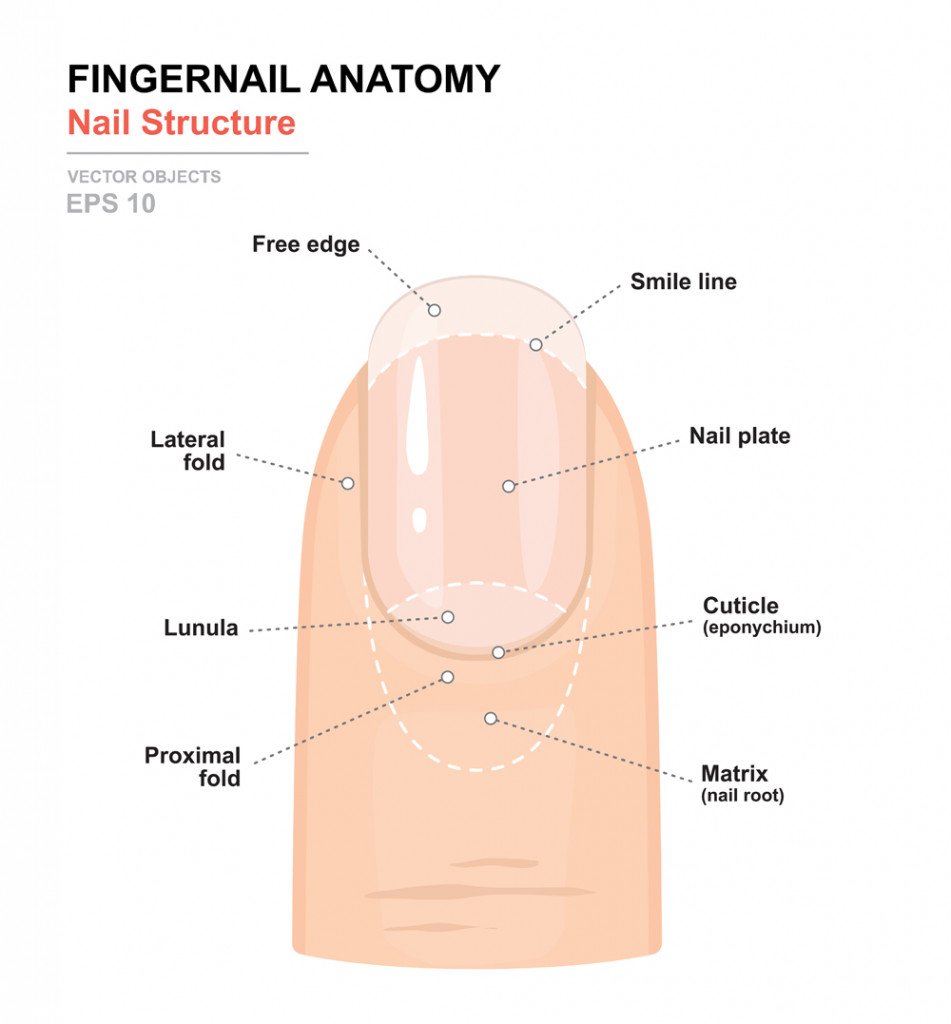Does Tapping Your Nails On A Table Make Them Grow
For those who spend a lot of time thinking nearly their appearance, or reveling in the joy of a fresh manicure or pedicure, there is something you accept most certainly noticed – your fingernails grow much faster than your toenails. Those of you lot who don't stare at your toes that frequently might non take noticed, but it's true – fingernails abound 2-3x faster than toenails, which might be why and so many more people pick and chew their fingernails than their toenails (apart from ease of access…)
This proven difference between growth rates is a flake strange however, leading u.s. to the obvious question… why do fingernails grow faster than toenails?

Short Answer:The shortest respond is that no one actually knows for certain, but at that place are plenty of very logical theories out at that place, including the differences in blood menstruum, usage and trauma of the fingers, as compared to the toes.
Recommended Video for you:
"Nail-ing" Down the Science
Earlier we can explain these differential growth rates, we should get-go understand a scrap more about the nails themselves. Our fingernails and toes are quite similar in near every manner, except when it comes to their growth patterns. Nails consist of the nail plate, which is what we see and can touch, which covers the smash bed. The half-moon area at the bottom of each nail is known as the lunula, which is partially covered by the cuticle.
Our "new" nails grow directly from the epithelial cells of an area chosen the germinal matrix, but those cells eventually begin to die, leaving behind a very important protein. Believe it or not, that poly peptide is the same one that forms a cardinal office of our hair and skin – keratin! The different thickness and texture of keratin in the body (skin is a lot softer than a toenail, right?) depends on the interwoven structure of the cells. Obviously, the nails on our fingers and toes are incredibly dense webs of keratin!
The keratin that is left backside gets mixed into a blend of other proteins and fats, and helped along by a key enzyme establish in the matrix chosen transglutaminase. So,voila! The product of that enzymatic reaction is the hardened nail, perfect for tapping a tabular array or scratching that itch. The hardened nail is then pushed out from beneath the cuticle past the next round of cell growth in the matrix. In a nutshell, this is the countless bicycle of smash growth that lasts for your unabridged life!
The rate of nail growth, on boilerplate, can be affected by a number of things, including age, sexual activity, diet, exercise, profession and even the time of the yr. Fingernails tend to grow roughly three.5-4mm per month, whereas toenails grow at between 1.6-1.8mm per calendar month, so the deviation is definitely at that place!
However, the growth of any cell requires a few cardinal things, such as nutrients, energy and circulation. When it comes to the question of different growth rates between toenails and fingernails, those growth factors are the likely explanation…
Toes vs. Fingers
While the fingers and toes are all considered digits, come in sets of 5, and possess nails that grow in a like manner, we tend to treat them very differently.
For example, we usually stuff our feet and toenails into socks and shoes, which can often reduce circulation and the period of blood. This is compounded by the fact that the feet are significantly further abroad from the centre than the hands. These 2 factors solitary mean that less blood catamenia reaches the anxiety, resulting in less oxygen and less nutrients for the production of new cells. This is one of the most popular explanations for the slower speed of toenail growth.

This is as well evidenced by research pointing to seasonal differences in growth rates. In other words, when your fingers and toes are colder (during the wintertime), less blood flows to those areas, due to claret vessel constriction, and smash growth rates measurably slow. In the summer, when the body is warm and the feet are less constricted by socks, shoes and boots, growth rates rise in one case once more.
A more contempo theory about blast growth rates relates to trauma. More specifically… micro-trauma. Imagine that yous bang your elbow hard against a wall, and within minutes, you can feel it swell up and commencement to bruise. This is the trunk sending cells and resources to investigate the trauma and begin the repair process, which occurs at a faster or more concentrated rate than normal cell turnover.
In the example of fingernails, it's the same thing, but on a much smaller scale. Think about the regular utilise of your fingertips and fingernails, ranging from pressing doorbells and doing pushups to typing away on your laptop or smartphone. Nosotros apply our hands and fingers constantly in life, especially in our new digital age, and each tap of a key sends a tiny "trauma" point to the epithelial cells in the matrix, causing an increase in growth, to recoup for the perceived "damage".

(Photograph Credit : Newspaper Teo/Shutterstock)
Toenails, on the other hand (or human foot), don't experience that sort of abiding usage, and for many people who live in shoes and socks, trauma to the toes doesn't happen too often, and unless y'all're learning to play piano with your feet, your toes aren't getting those nearly constant "traumatic" bursts that stimulate the delivery of nutrients and blood to the germinal matrix.
While this theory isn't 100% corroborated as the reason for these different growth rates, the peripheral evidence all matches up too. This thought is backed up by the fact as we become older, our capillaries and claret vessels tend to intermission downwards or function less finer, resulting in decreased claret menstruum to our extremities and appendages. Studies have repeatedly shown that smash growth slows downwards every bit we historic period – often by up to 30%! Numerous enquiry studies have too establish that blast growth in a person's dominant hand is incrementally faster than in the non-ascendant hand.
Most Probable Explanation? More Use = More "Trauma" = More Blood Menstruation = More Nail Growth.
Suggested Reading
-
The Greatest Show on Globe: The Evidence for Development -
The Origin of Species: 150th Anniversary Edition -
Fundamentals of Biochemistry: Life at the Molecular Level, 4th Edition
Was this commodity helpful?
Yes No
Help us make this commodity amend
Source: https://www.scienceabc.com/humans/why-do-fingernails-grow-faster-than-toenails.html
Posted by: floresanion1954.blogspot.com




0 Response to "Does Tapping Your Nails On A Table Make Them Grow"
Post a Comment